Earth's Place in the Universe
-
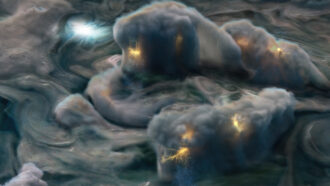 Space
SpaceLightning dances through Jupiter’s skies much like it does on Earth
Data from NASA’s Juno spacecraft hint that Jupiter’s lightning extends in jagged steps as it does on Earth.
By Nikk Ogasa -
 Physics
PhysicsScientists Say: Explosion
Explosions happen when chemical or nuclear reactions blow out a lot of heat, noise and expanding gas.
-
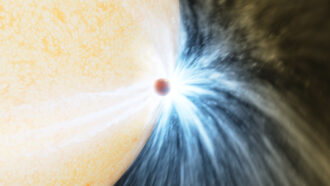 Planets
PlanetsIn a first, telescopes have caught a star eating a planet
A burst of light and a cloud of dust are signs that a distant star swallowed a giant planet.
-
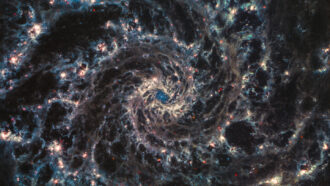 Space
SpaceJames Webb telescope catches newborn stars sculpting spiral galaxies
Dark voids riddle the galaxies, revealing new details about how stars alter their environments.
-
 Physics
PhysicsExplainer: Reflection, refraction and the power of lenses
The inner workings of microscopes, telescopes, eyeglasses and other lens-based devices rely on two important laws of optics.
By Trisha Muro -
 Space
SpaceHere’s why the moon must get its own time zone
But should moon time be like Earth time — or quite different? At issue: The moon’s lesser gravity will make seconds there tick faster than on Earth.
By Tammy Awtry -
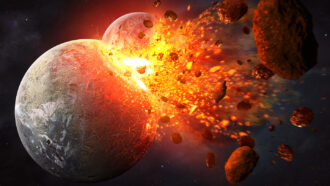 Earth
EarthOne collision could have formed the moon and started plate tectonics
A hypothetical planet slamming into Earth 4.5 billion years ago might have set subduction into motion.
By Nikk Ogasa -
 Planets
PlanetsResearch on exoplanets took top award at 2023 Regeneron ISEF
Six young researchers took home the top awards, each valued at a minimum of $50,000. Hundreds more shared nearly $9 million in prizes at international event.
-
 Tech
TechA new solar-powered gel purifies water in a flash
The unusual, fruit-inspired structure of this material provides quick filtration that could satisfy people's daily water needs.
-
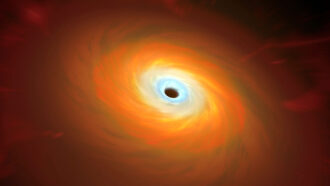 Space
SpaceScientists Say: Accretion Disk
Cosmic swirls of gas, dust and plasma, accretion disks reveal the shadowy silhouettes of black holes and more.
-
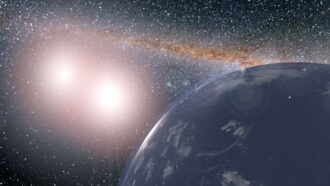 Planets
PlanetsPlanets like Star Wars’ Tatooine could be fit for life
Like Luke Skywalker’s home, planets orbiting two stars may be plentiful. A new computer model suggests that many of those worlds could sustain life.
-
 Earth
EarthScientists Say: Equinox and Solstice
Equinoxes and solstices mark the maximums, minimums and mediums of hours spent in daylight.